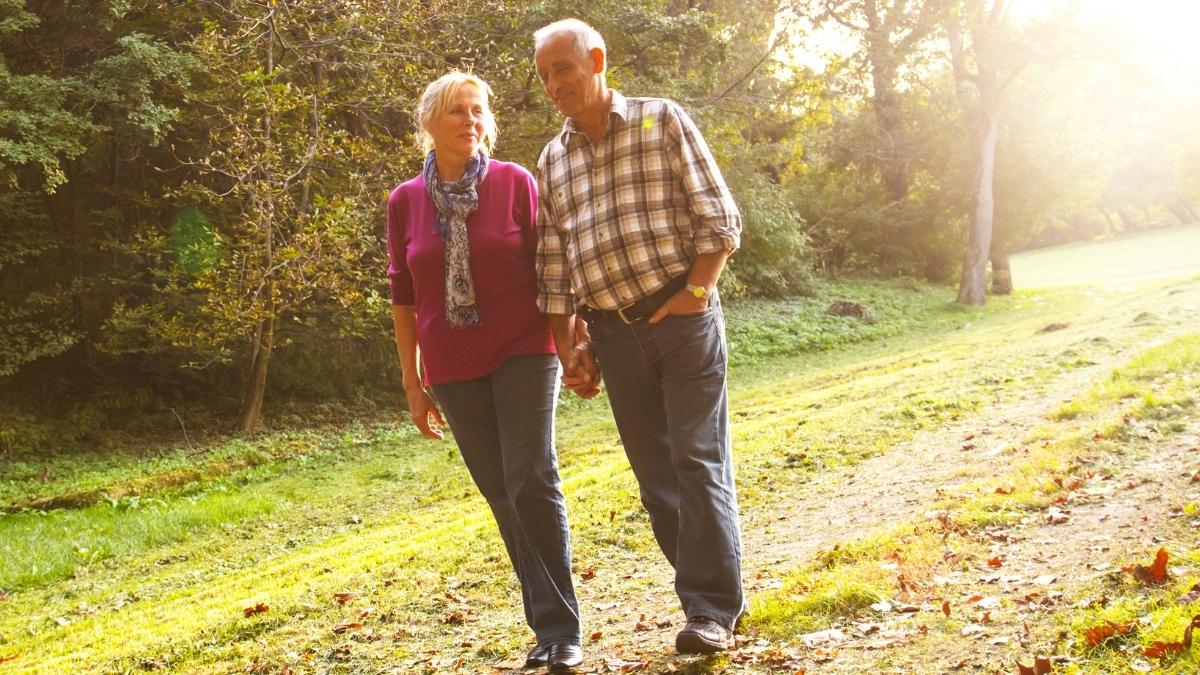It’s time for A Breath of Fresh Air: Walking Outdoors for Your Lung Health. Let’s take a stroll outdoors.
Most of us grew up playing outdoors—in parks, in the woods, in open fields. Yet many of us spend too much of our time indoors these days, especially those of us who suffer from lung diseases such as chronic obstructive pulmonary disease (COPD), emphysema, and pulmonary fibrosis.
But getting outside for a short walk can be the best part of the day, and science shows that fresh air can do all of us good.
In the journal Environmental Pollution, the presence of trees is shown to have saved 850 lives and prevented 670,000 cases of acute respiratory symptoms. Trees not only remove carbon dioxide from our air and replace it with oxygen, they also filter out pollutants.
In our modern world, our daily lives are saturated with pollution, even indoors. Being out among green, growing things lowers the chances of coming into contact with these undesirable pollutants.
Why Walk?
For people with lung disease, maintaining a strong immune system can be a challenge. The stress of the disease itself, combined with the effects of medications, can make people more susceptible to harmful bacteria and viruses.
Walking outdoors is known to bolster the immune system by leading to “…an increase in natural killer cells, neutrophils, and monocytes, which ultimately increases immune function,” says Ather Ali, ND, MPH, assistant director of Complementary/Alternative Medicine Research at the Yale-Griffin Prevention Research Center.
Let’s Go Outside
Walking outdoors can also allow us to take time to smell the flowers. The scent of flowers has been shown to promote relaxation. Blooms such as jasmine and lavender, according to the University of Maryland Medical Center, produce calming, soothing, and sedative effects when their scents are inhaled.
A stroll in the park or your own backyard can help you feel calmer and happier when you catch a hint of fresh-cut grass. While rain can put a damper on your picnic, the distinctive scent of a downpour is something that reminds us of green plants and new growth, which may explain why we love the smell so much.
According to the Journal of Environmental Psychology, spending time in fresh air, surrounded by nature, increases energy in 90 percent of people. Natural surroundings provide fuel for our souls, so if lung disease is sapping your energy, consider taking a walk outdoors instead of reaching for a cup of coffee or an energy drink.
Let’s Walk

One reason for staying indoors could be that people feel too weak to go any appreciable distance on foot. There are wheeled walking aids called Rollators that allow such people to safely take a stroll with the ability to brake on inclines. They even double as a place to sit.
According to the National Heart Lung and Blood Institute, regular, brisk 30-minute walks increase lung capacity. This also strengthens the lungs.
With increased lung capacity, you will breathe easier, and your lungs will stay healthier longer. Walking is also good for your heart, reducing the chance of getting heart disease.
Walking is a low impact weight bearing activity that is easy on the knees. Weight bearing activities increase bone mass, helping to prevent osteoporosis, as well as further damage from osteoporosis. Walking can help you lose weight, which is good for overall health, but specifically makes it easier to breathe.
Walking increases blood flow in the body reducing back and joint pain. The increased blood flow to the brain enhances emotional well-being and reduces stress levels. Scientific studies show that exercise, including walking, may increase serotonin levels in the brain, reducing depression symptoms.
Walking also helps a person to sleep better at night. A restful sleep is helpful for reducing anxiety, depression and stress. Of course, you should always consult with a doctor before beginning any exercise regimen.

Christine Kingsley, APRN is the Health and Wellness Director at the Lung Institute where she focuses on providing helpful online resources for people looking for information on various lung diseases, breathing exercises, and healthy lifestyle choices. She advocates for holistic care that involves working with your doctor to explore all options including traditional and alternative care while focusing on diet and exercise as proactive measures.









